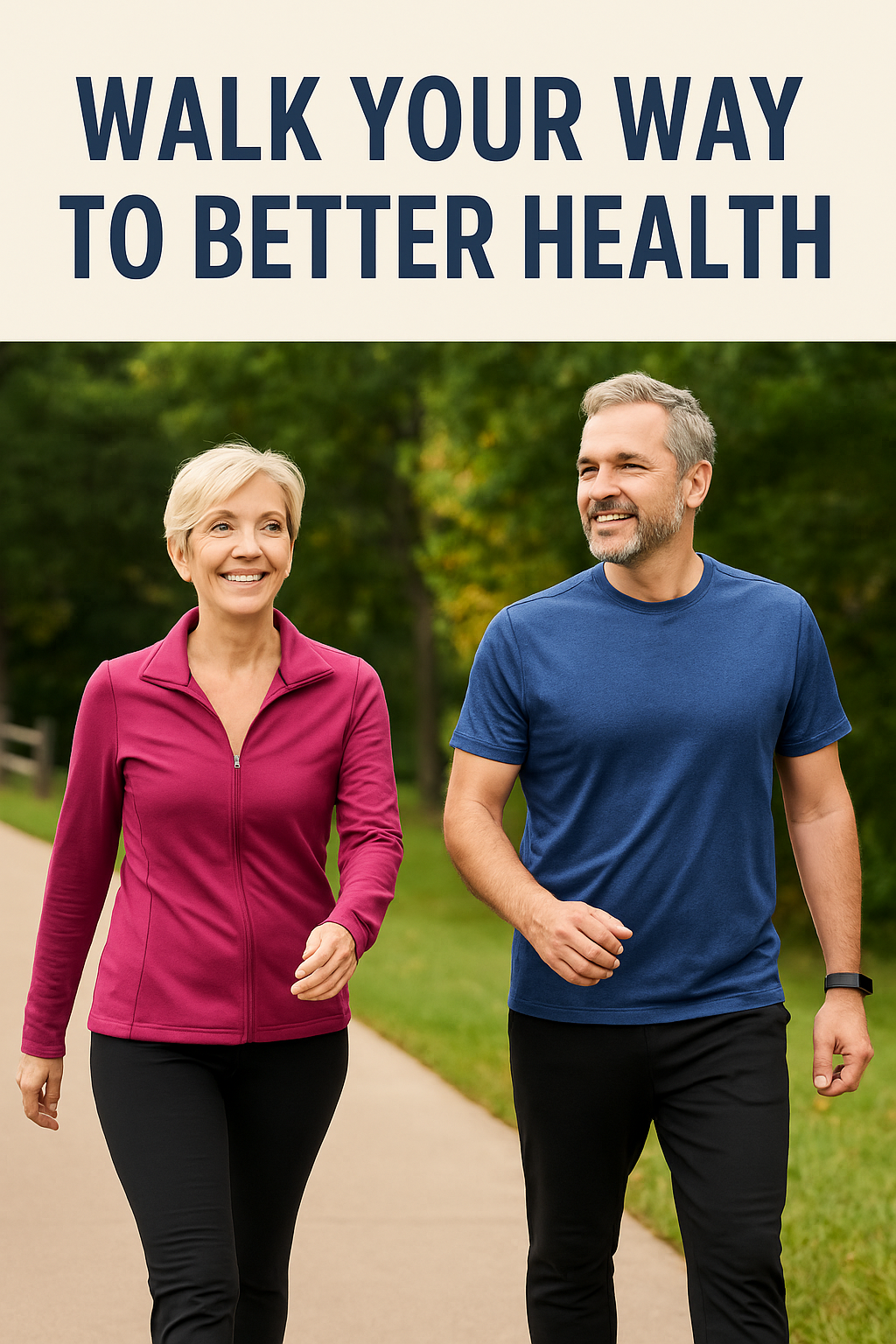River Valley Fork
Archives
Walk Your Way to Better Health | River Valley Healthy Living
SIGN UP FOR OUR NEWSLETTER
If you’re looking for a low-cost, joint-friendly way to improve your health, the simplest answer might be right outside your front door: walking.
From heart health and blood sugar control to mood and longevity, regular walks deliver outsized benefits—no gym membership required. How much is “enough” walking?
U.S. guidelines recommend at least 150 minutes of moderate-intensity activity per week—think brisk walking spread across your week.
That’s roughly 30 minutes a day, five days a week. If you prefer to go harder, 75 minutes of vigorous activity is an alternative, and adding strength training twice weekly is ideal.
Not sure what “moderate” feels like?
Use the talk test: you should be able to talk but not sing while walking.
Brisk pace typically means ~2.5 mph or faster, but your breathing is the real guide.
Steps, not perfection
You’ve probably heard “10,000 steps,” but research suggests meaningful health gains kick in well before that.
In a study of middle-aged adults, those who averaged 7,000–9,999 steps/day had a 50–70% lower risk of death than people taking fewer than 7,000 steps.
Benefits leveled off beyond ~10,000 steps.
Larger population data also show a steady drop in mortality, cancer, and cardiovascular risk as daily steps rise—up to about 10,000 per day—with no strict minimum to start seeing benefits.
Translation: more is better, but some is far better than none.
The post-meal secret: short walks, big gains
One of the smartest habits you can start this week: walk after meals.
A systematic review found that walking as soon as possible after eating blunts post-meal blood sugar spikes more than walking before or much later.
Even ~20 minutes after dinner makes a measurable difference.
Emerging experimental work goes further: a brief 10-minute walk right after a meal lowered peak glucose compared with doing nothing or waiting longer to walk—an easy strategy for anyone with insulin resistance or a family history of diabetes.
Mood, stress, and sleep
Walking doesn’t just train your heart—it helps your mind.
Exercise, including regular walking, is associated with lower risk of depression and improvements in anxiety and overall psychological distress.
Consistency matters, but the bar to get started is low.
“Every minute counts” (really)
If you’re busy (who isn’t?), remember the dose-response: some movement beats none.
Sneak in 5–10 minute bouts—park farther away, climb a few flights of stairs, pace during phone calls.
Health agencies emphasize that any activity, accumulated throughout the day, moves you in the right direction.
How to start (and stick with it) in the River Valley
Safety tips
If you’re returning from injury, managing a chronic condition, or on medications that affect blood sugar or blood pressure, check with your clinician before ramping up.
Choose well-lit routes, wear supportive shoes, stay hydrated, and mind summer heat/humidity or winter ice.
The bottom line
Walking is the River Valley’s most accessible health upgrade.
Accumulate 150 minutes/week at a brisk pace, add post-meal walks, and nudge your steps upward.
You’ll support your heart, metabolism, mood, and longevity—one block, bridge, or greenway at a time. |

